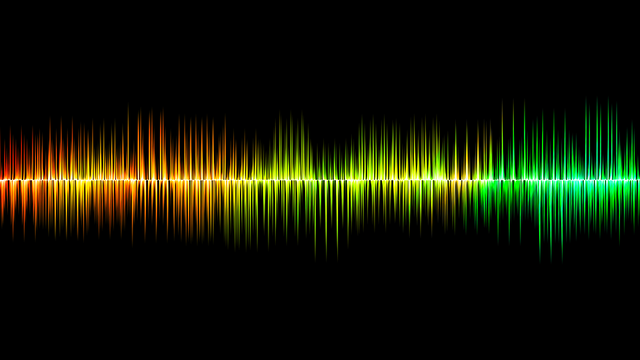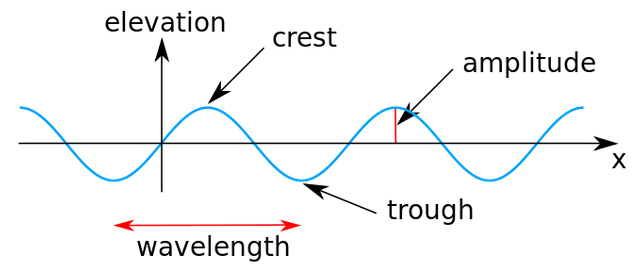Let's Learn Something Cool - What Is Sound
Hello steemians! In the last troll-physics post we saw three simple experiments on sound. But have you ever wondered what comprises this magnificent ability of ours to perceive our environment through sound?
Edit: I just got a silly rhyme, it would be too bad not to share:
What is sound? @ruth-girl just tell me, @ruth-girl just tell me, oh! oh! (like this remix from Lost Frequencies-did you get the pun-storm?), it makes a nice soundtrack for my post, don't you think?

(Image source: pixabay.com)
Duh! It's our ears of course!
Yes, it's your ears, but how are all these stimuli produced? From a mother's humming for her crying baby to the annoying alarm clock that spoils our sleep and the deafening explosions in a bomb attack, sounds share one thing in common...vibrations!
Vibrations? When I speak nothing vibrates.
Oh yes it does! It's your diaphragm and vocal chords that vibrate, but first let me explain what sound is.
Sound is described as a disturbance in pressure that can be propagated through a medium of gas, liquid or solid. This means that in the absence of matter the existence of sound is impossible (that's why space is as silent as the grave). This disturbance is a longitudinal wave that gets transmitted by affecting the particles it meets in its way (more or less like a string that extends and compresses). Particles are now taking part in a very special relay race, where the finishing line is our ears.
A sound wave will keep travelling until it runs out of energy. Since it is a wave, it has four basic properties:
- Speed: How fast a sound wave can travel through a medium.
- Frequency: How many waves there are every second.
- Amplitude: The distance from the central line to the peak of a wave line.
- Direction.
Sound is a wave? Like the ones we see at the beach?
Not exactly. In wave mechanics we have some basic concepts:

(Image source: commons.wikimedia.org)
A wave is characterized by its peak, the crest, and it lowest point, the trough. They define the amplitude, the distance from the crest or trough to the central line that passes through the wave. The number of waves we count within a second is their frequency. There is also the wavelength, the distance between two crests, that when multiplied with frequency, it gives us the speed of the wave.
Ok, can you explain it a bit more?
Sure! The speed of sound is determined by the properties of the medium and is different in all different states of matter. For air, it is 343 m/s and comes from the equation below:
v = 331 + (0.6 x T) m/s (where v = speed and T = temperature)
Another formula defines the speed of sound as the square foot of the ratio of the bulk modulus (the resistance to compressibility) to the density of the medium.
(Image by @ruth-girl)
Frequency is the number of waves per second (Herz/second). Frequency is also referred to as pitch and can be high or low depending on the speed of the wave.
Amplitude is the distance of a crest or a trough from the central line. It defines how loud a sound is, the greater the amplitude the louder the sound.
The direction of a sound wave is longitudinal, meaning that as it travels in one direction, it only creates disturbance in this direction (for example, if a sound wave is directed forward, the disturbance is forward and not up and down). Consider sound like a spring that extends to transfer energy to the neighboring particles it meets in its way.
A spring?
Yes, an invisible spring that stretches and relaxes back and forth only, going on to transfer its kinetic energy to another spring and that to another, and another, and so on... The edges of the spring are the molecules of the medium that are disturbed and transfer sound through this medium.

(Image source: pixabay.com)
What sounds can people hear?
Not all frequencies are perceivable by the human ears. We are restricted to hear sounds with frequencies of 20 Hz to 20 kHz. This range lowers with age, as our hearing impairs in time. For animals the range of frequencies is also different, there are frequencies that our ears cannot perceive, but animals can detect very clearly.
Wanna listen to the basics again?
References
physics.info
physicsclassroom.com_1
physicsclassroom.com_2
physicsclassroom.com_3
wikipedia.org_1
wikipedia.org_2

Thank you for stopping by and giving this post a read. I hope you enjoyed it! If you please, feel free to pay a visit to my blog and check out my short stories along with plenty of educational posts and of course my bizarre natural phenomena series.



Until my next post,
Steem on and keep smiling people!

It is very interesting to test that in class. You will observe large deviations already with a small set of 15-20 students :)
Yes, each person's anatomical features will certainly make the difference. Too bad our public schools usually lack even the basic experimental equipment. We lose so much sometimes...
Excellent work as always @ruth-girl ! Thanks for sharing :)
Thank you for being here @mcfarhat!! :D
I wonder how the very low or high sounds, sound like. Maybe its better that we can't hear them. A friend of mine had a dog and she bought a dog wistle. It was funny to see the dog react to it while we didn't hear anything.
That poor dog! It must have gone crazy :P
Well, imagine being able to hear frequencies we don't normally do, even if it was only for an hour I think we could not handle it...
Yeah we worried about that too, didn't do it for too long hehe
Congratulations! This post has been upvoted from the communal account, @minnowsupport, by ruth-girl from the Minnow Support Project. It's a witness project run by aggroed, ausbitbank, teamsteem, theprophet0, someguy123, neoxian, followbtcnews/crimsonclad, and netuoso. The goal is to help Steemit grow by supporting Minnows and creating a social network. Please find us in the Peace, Abundance, and Liberty Network (PALnet) Discord Channel. It's a completely public and open space to all members of the Steemit community who voluntarily choose to be there.
This post has received a 1.56 % upvote from @drotto thanks to: @banjo.
Excellent series of posts. I love learning about these things.
Thank you!
@alchemage has voted on behalf of @minnowpond. If you would like to recieve upvotes from minnowponds team on all your posts, simply FOLLOW @minnowpond.
it would be nice to also talk a bit about the doppler effect, but your explanation is excellent congratulations friend @lugina
This post has received a 1.42 % upvote from @buildawhale thanks to: @ruth-girl. Send at least 0.50 SBD to @buildawhale with a post link in the memo field for a portion of the next vote.
To support our curation initiative, please vote on my owner, @themarkymark, as a Steem Witness
@minnowpond1 has voted on behalf of @minnowpond. If you would like to recieve upvotes from minnowponds team on all your posts, simply FOLLOW @minnowpond.